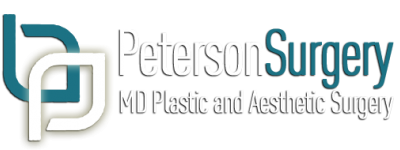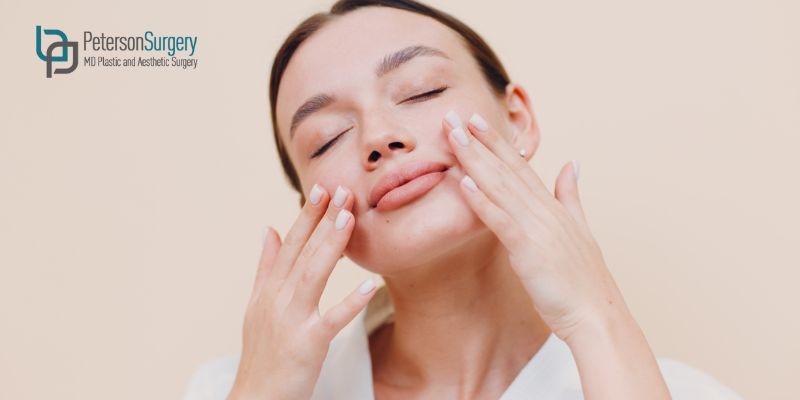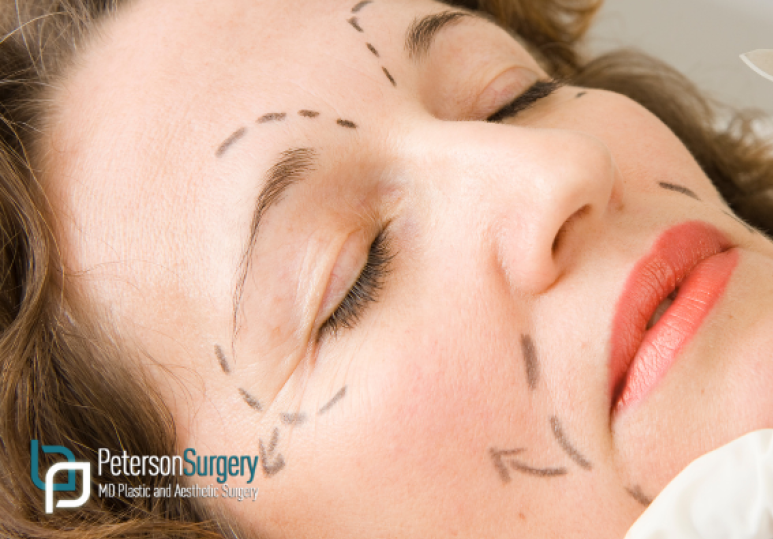Facial rejuvenation refers to a series of cosmetic treatments that can smooth lines and creases in the face and neck. As we age, the skin loses elasticity, collagen production decreases, and wrinkles and fine lines may become more prominent. Facial rejuvenation techniques aim to address these signs of aging, revitalizing the skin and enhancing facial features. There are various facial rejuvenation options available, both surgical and non-surgical. Some common procedures include Botox injections to reduce wrinkles, dermal fillers to restore volume, chemical peels to exfoliate and improve skin texture, laser treatments for skin resurfacing, and facelifts to tighten loose skin and redefine facial contours.
There are a few options Dr. Peterson offers for facial rejuvenation:
- Otoplasty
- Dermabrasion
- Brow Lift
- Face Lift
- Neck Lift
- Eyelid Surgery
- Nasal Surgery
- Chin Augmentation
- Could it be for you?
1. Aging Signs
Botox, dermal fillers and facelifts can target and reduce signs of aging. Some signs to look out for include wrinkles, fine lines and sagging skin.
2. Confidence
Another reason why individuals may turn toward facial rejuvenation is for an increased sense of confidence. We want to help you love how you look!
3. Minimal Invasion
If you prefer minimally invasive procedures, make sure to tell your doctor. Chemical peels and laser therapy offer quick recovery and very natural-looking results.
4. Personalized Treatment Plan
Facial rejuvenation procedures can be tailored to individual needs. By sharing your desires, your doctor can address specific concerns and help you achieve satisfying results.
5. Long Lasting Results
Facial rejuvenation can provide lasting benefits for years to come. The longevity of the results varies depending on the specific treatment undergone, individual factors such as age and lifestyle, and the body's natural aging process.
Facial rejuvenation might be for you if you want long lasting results, need a personal treatment plan, prefer minimal invasion and want an increase of confidence towards signs of aging. Facelift surgery can last around 10 to 15 years depending on the individual’s factors and the extent of the surgery. You can even choose a treatment that improves skin texture with results that last 3 to 4 months. With regular maintenance you’ll be on the road to feeling like your best self!
FAQ
Q: How do I know if I'm a suitable candidate for facial rejuvenation?
A: Facial rejuvenation procedures are suitable for individuals who have concerns about visible signs of aging, such as wrinkles, fine lines, sagging skin, or loss of facial volume. Good candidates are generally in good overall health, have realistic expectations about the outcomes, and are non-smokers. It is essential to consult with a qualified cosmetic surgeon or dermatologist for a personalized assessment to determine the most suitable treatments based on individual needs and medical history.
Q: Are facial rejuvenation procedures painful?
A: The level of discomfort experienced during facial rejuvenation procedures can vary depending on the type of treatment and individual pain tolerance. Non-surgical treatments like Botox and dermal fillers typically involve minimal discomfort, and numbing agents can be used to enhance comfort during the procedure. Surgical procedures, such as facelifts, may involve some post-operative discomfort, but pain management medications are provided to alleviate any discomfort. The medical team will prioritize your comfort and address any concerns you may have during the consultation and treatment process.
Q: How long is the recovery period after facial rejuvenation procedures?
A: The recovery period after facial rejuvenation procedures can vary depending on the specific treatment and the individual's healing process. Non-surgical procedures generally require little to no downtime, with patients often resuming their daily activities immediately after treatment. For surgical procedures like facelifts, the initial recovery period may involve some swelling and bruising, typically lasting a few weeks. Most individuals can resume normal activities within 1 to 2 weeks but should avoid strenuous activities during the early stages of recovery. The medical team will provide post-operative instructions and guide you through the recovery process to ensure a smooth and successful healing journey.






